Sandy Wright's Blog, page 7
September 29, 2019
Writers Conference Notes
I’m home from the Pacific Northwest Association Writer’s Conference, and my head’s stuffed with new ideas for completing my current novel.
The good news: Despite not having a completed manuscript, I pitched agents and editors, and received requests for partial pages from Putnam and Wild Rose Press, as well agents with Kimberly Cameron, 5x5 and Victress.
The bad news: I got sick the day after stepping off the plane from Seattle, so those requests will go out this week.
Conference Highlights
The break-out sessions were well organized, and the Thriller/Suspense panels were set up in such a way that I could go through the entire day’s sessions, one after another in the same room, and not have to carry all my paraphernalia with me. Thank you, PNWA organizers!
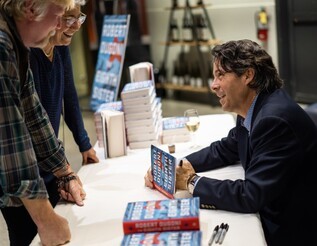 Session #1: Plotting
Session #1: Plotting
by Robert Dugoni
Several good take-aways from this presentation that I intend to incorporate immediately into my work in progress.
First, my victim, Abby, needs to be more ‘relatable.’ Does she have to be likeable? No, but she needs to have something added to her backstory, some type of wound (aside from her husband’s affair), that helps readers relate to her. Then they will care deeply when she is killed. Luckily, I figured out what that wound will be, and I can’t wait to add it.
Dugoni told us he didn’t think prologues were automatic death, it depends on how they are used, and he used an example of how he used a prologue in one of his own novels. I’ve been struggling on how to introduce my murder-minded husband, Jace, at the beginning of the book, without confusing readers (and agents/editors), having them think he’s my main character. A Jace prologue would solve my problem, leaving Rumor, the protagonist, to debut in chapter 1.
But the bit of advice that will help me the most often is how to avoid writer’s block. “If you’re stuck on one scene,” he says, “put down a place marker. Don’t worry over it or stop writing. Just go to a scene you can write, and want to write, and do it.” He said not to fret over the action before or after that scene. Just write it. Then write the action around that scene. And continue on from there. “Once I learned to do this,” Dugoni said, “I never have a bad writing day.”
By the way, have you ever met this man? Besides being a NYT best-selling author with millions of books sold, he is a workhorse for PNWA. They are so fortunate to have him.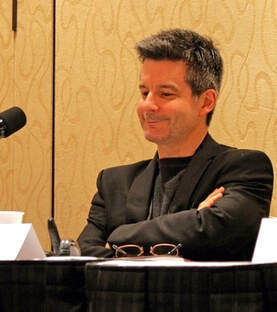 Session #2:
Session #2:
The Inner Journey
By Donald Maass
Questions to ask your character to delve into his/her resistance to change.
These can help bolster a sagging middle story.
Maass gave us a gigantic list of questions, but these are the ones I am going to use, as needed:I can’t change because I have a responsibility to ___ who I must take care of.The person I can’t disappoint is ____and if I did, this is what would happen ___If I were different, I’d have to admit that I am ____and that’s something I don’t want to do.The thing that makes me rage out of control is____ and what I say or do is ____. To whom? _____The thing that feels best to let go is ____What is the one thing I can’t do, won’t even try ____. I don’t want to do it because ____. What could occur in story to challenge my protagonist to try? _____What is comforting to your protaganist? ____ (Don makes spaghetti sauce)What is the moment he must show courage? ___ Justice? ____What I the very last moment for a declaration of love? ____What lack of action would make him die inside? ____What is his/her big, symbolic, maybe even public, act of courage? ____. The more public the confession, the bigger it is. What’s the most dramatic place that it can happen? ____moment of crisis: If I don’t do this (or confess to this), I’ll lose ____. 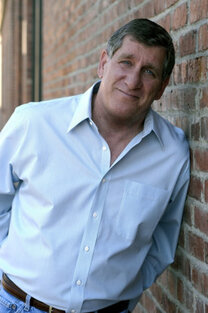 Session #3: Maintaining Tension and Suspense
Session #3: Maintaining Tension and Suspense
Panel: Bob Dugoni, Kevin O’Brien, Ingrid Thoft, Mike Lawson.
First, it was obvious that these guys are friends off-stage, and their good-natured teasing made the session more fun.
One of the first questions the panel members were asked was, “do you plot?” I admit I was surprised by some of the answers. Bob and Mike both said “no.”
 Ingrid replied “somewhat.”
Ingrid replied “somewhat.”
 Kevin not only said “yes,” but also gave a detailed outline of his process.
Kevin not only said “yes,” but also gave a detailed outline of his process.
Mike Lawson didn’t surprise me, he comes across as a seat-of-the-pants guy. But I was surprised by Bob Dugoni’s answer. He was a lawyer in his previous career, so I expected him to plan the hell out of his stuff. It certainly reads like it’s closely plotted.
The panelists all stressed to make sure every chapter has an obstacle that either reveals character or moves the story forward. And remember, a ‘fork in the road’ situation can bring in both obstacle and character reveal.
I had several flashes of insight regarding my own characters during this panel discussion. First, my killer should go through his own cycle of change, and modify his behavior, not kill Sadie because Coop loves her, and Coop has done something kind to him, something that shows he understand the killer’s pain over losing his family. I know that sounds vague and convoluted, but you’ll just have to trust me. You’ll recognize it when you read it in the book!
Also, the killer will either end up confessing, or he will put himself in a situation where the sheriff (Coop) must kill him (atonement). That’s all I’m saying.
There was an interesting discussion on how to ratchet up tension in a flat scene. The comment was, “Don’t go with your first thought. It will be the obvious one. Think of several more scenarios. Go with at least the third one, not the first couple.” Okay, I thought, time consuming, but worth a try.
But there was more. “Then,” they said, “find a third element.” Think about the movie “The Untouchables.” Remember the scene where Kevin Costner and his crew were hot on the trail of the bad guys, in a building with a tall flight of stairs. Remember the lady with baby carriage, trying to maneuver it down those stairs, right in the way of Kevin Costner? That tension, caused by that lady with the baby carriage—that was the third element. What fun!
Another interesting take-away from this panel was Kevin O’Brien. I hadn’t read any of his stuff, but when Bob said, “I don’t read him. He’s too scary,” I immediately made a note to pick up one of his books from the conference bookstore. I started reading They Won’t Be Hurt on the flight home. Yes, O’Brien’s mind goes to warped places. You’ll be seeing a review on his book next month. P.S. I’m having thyroid surgery next week and will not be posting a blog. Cross your fingers for one node out and close ‘er up!
P.S. I’m having thyroid surgery next week and will not be posting a blog. Cross your fingers for one node out and close ‘er up!
See you in two weeks.
The good news: Despite not having a completed manuscript, I pitched agents and editors, and received requests for partial pages from Putnam and Wild Rose Press, as well agents with Kimberly Cameron, 5x5 and Victress.
The bad news: I got sick the day after stepping off the plane from Seattle, so those requests will go out this week.
Conference Highlights
The break-out sessions were well organized, and the Thriller/Suspense panels were set up in such a way that I could go through the entire day’s sessions, one after another in the same room, and not have to carry all my paraphernalia with me. Thank you, PNWA organizers!
 Session #1: Plotting
Session #1: Plotting by Robert Dugoni
Several good take-aways from this presentation that I intend to incorporate immediately into my work in progress.
First, my victim, Abby, needs to be more ‘relatable.’ Does she have to be likeable? No, but she needs to have something added to her backstory, some type of wound (aside from her husband’s affair), that helps readers relate to her. Then they will care deeply when she is killed. Luckily, I figured out what that wound will be, and I can’t wait to add it.
Dugoni told us he didn’t think prologues were automatic death, it depends on how they are used, and he used an example of how he used a prologue in one of his own novels. I’ve been struggling on how to introduce my murder-minded husband, Jace, at the beginning of the book, without confusing readers (and agents/editors), having them think he’s my main character. A Jace prologue would solve my problem, leaving Rumor, the protagonist, to debut in chapter 1.
But the bit of advice that will help me the most often is how to avoid writer’s block. “If you’re stuck on one scene,” he says, “put down a place marker. Don’t worry over it or stop writing. Just go to a scene you can write, and want to write, and do it.” He said not to fret over the action before or after that scene. Just write it. Then write the action around that scene. And continue on from there. “Once I learned to do this,” Dugoni said, “I never have a bad writing day.”
By the way, have you ever met this man? Besides being a NYT best-selling author with millions of books sold, he is a workhorse for PNWA. They are so fortunate to have him.
 Session #2:
Session #2:The Inner Journey
By Donald Maass
Questions to ask your character to delve into his/her resistance to change.
These can help bolster a sagging middle story.
Maass gave us a gigantic list of questions, but these are the ones I am going to use, as needed:I can’t change because I have a responsibility to ___ who I must take care of.The person I can’t disappoint is ____and if I did, this is what would happen ___If I were different, I’d have to admit that I am ____and that’s something I don’t want to do.The thing that makes me rage out of control is____ and what I say or do is ____. To whom? _____The thing that feels best to let go is ____What is the one thing I can’t do, won’t even try ____. I don’t want to do it because ____. What could occur in story to challenge my protagonist to try? _____What is comforting to your protaganist? ____ (Don makes spaghetti sauce)What is the moment he must show courage? ___ Justice? ____What I the very last moment for a declaration of love? ____What lack of action would make him die inside? ____What is his/her big, symbolic, maybe even public, act of courage? ____. The more public the confession, the bigger it is. What’s the most dramatic place that it can happen? ____moment of crisis: If I don’t do this (or confess to this), I’ll lose ____.
 Session #3: Maintaining Tension and Suspense
Session #3: Maintaining Tension and Suspense
Panel: Bob Dugoni, Kevin O’Brien, Ingrid Thoft, Mike Lawson.
First, it was obvious that these guys are friends off-stage, and their good-natured teasing made the session more fun.
One of the first questions the panel members were asked was, “do you plot?” I admit I was surprised by some of the answers. Bob and Mike both said “no.”
 Ingrid replied “somewhat.”
Ingrid replied “somewhat.”
 Kevin not only said “yes,” but also gave a detailed outline of his process.
Kevin not only said “yes,” but also gave a detailed outline of his process. Mike Lawson didn’t surprise me, he comes across as a seat-of-the-pants guy. But I was surprised by Bob Dugoni’s answer. He was a lawyer in his previous career, so I expected him to plan the hell out of his stuff. It certainly reads like it’s closely plotted.
The panelists all stressed to make sure every chapter has an obstacle that either reveals character or moves the story forward. And remember, a ‘fork in the road’ situation can bring in both obstacle and character reveal.
I had several flashes of insight regarding my own characters during this panel discussion. First, my killer should go through his own cycle of change, and modify his behavior, not kill Sadie because Coop loves her, and Coop has done something kind to him, something that shows he understand the killer’s pain over losing his family. I know that sounds vague and convoluted, but you’ll just have to trust me. You’ll recognize it when you read it in the book!
Also, the killer will either end up confessing, or he will put himself in a situation where the sheriff (Coop) must kill him (atonement). That’s all I’m saying.
There was an interesting discussion on how to ratchet up tension in a flat scene. The comment was, “Don’t go with your first thought. It will be the obvious one. Think of several more scenarios. Go with at least the third one, not the first couple.” Okay, I thought, time consuming, but worth a try.
But there was more. “Then,” they said, “find a third element.” Think about the movie “The Untouchables.” Remember the scene where Kevin Costner and his crew were hot on the trail of the bad guys, in a building with a tall flight of stairs. Remember the lady with baby carriage, trying to maneuver it down those stairs, right in the way of Kevin Costner? That tension, caused by that lady with the baby carriage—that was the third element. What fun!
Another interesting take-away from this panel was Kevin O’Brien. I hadn’t read any of his stuff, but when Bob said, “I don’t read him. He’s too scary,” I immediately made a note to pick up one of his books from the conference bookstore. I started reading They Won’t Be Hurt on the flight home. Yes, O’Brien’s mind goes to warped places. You’ll be seeing a review on his book next month.
 P.S. I’m having thyroid surgery next week and will not be posting a blog. Cross your fingers for one node out and close ‘er up!
P.S. I’m having thyroid surgery next week and will not be posting a blog. Cross your fingers for one node out and close ‘er up! See you in two weeks.
Published on September 29, 2019 10:05
September 20, 2019
Mabon Blessing
 It’s time for the Second Harvest
It’s time for the Second HarvestOf colors red and gold.
A time to gather and reap
The fruit from the seeds we sowed.
We honor the spirit of all living things.
We give them our blessings for gifts we’ve received.
Bless the trees felled for shelter,
Bless the food which once breathed.
Remind us, Oh Spirit, lest we forget,
To take no life lightly,
We all have a debt
In this eternal circle of life into death.
Each beginning has an ending.
Then it circles full round.
The Oak King dies,
Thus the Holly King is crowned.
Light and dark balanced on a sheaf of wheat,
As the last grain signals the harvest complete.
Spirit, bring your perfect love to our rite,
That we may always keep balance firmly in sight.
Happy Mabon.
Published on September 20, 2019 16:55
September 3, 2019
Greenland is Melting
 Last week, Greenland showed the world a stark glimpse of earth’s possible future.
Last week, Greenland showed the world a stark glimpse of earth’s possible future.We should all be paying attention.
On Greenland’s Helheim Glacier, just inside the Arctic Circle, New York University air and ocean scientist David Holland’s coat is discarded on the ground. His colleagues are working on watery melting ice without gloves. In one of the closest towns, Kulusuk, the morning temperature reached a shirtsleeve 52 degrees Fahrenheit.
In this remote landscape, sound travels for miles. Every few minutes there’s a faint rumbling that sounds like thunder, but it’s not. It’s ice cracking.
The ice Holland is standing on is thousands of years old. It will be gone within a year or two, adding yet more water to rising seas worldwide.
On August 1, Greenland’s ice sheet endured the largest single-day melt event in recorded history. A heat wave melted 5 million Olympic pool’s worth of water in one day. By the end of this summer, about 440 billion tons of ice will have melted or calved off Greenland’s giant ice sheet, scientists estimate.
The sparse population of this island has been swelled by scientists studying the ice melt for causes. NASA oceanographer Josh Willis, who is also in Greenland, says what’s happening is a combination of man-made climate change and natural but weird weather patterns. Glaciers here do shrink in the summer and grow in the winter, but nothing like this year.
Holland and his team have installed radar and GPS to track the ice movement and help explain why salty, warm, once-tropical water attacking the glacier’s “underbelly” has been bubbling to the surface.
“It takes a really long time to grow an ice sheet, thousands and thousands of years, but they can be broken up or destroyed quite rapidly,” Holland said.
Holland and NASA scientists at the glacier, suspect that warm, salty water that comes in part from the Gulf Stream in North America is playing a bigger role than previously thought in melting Greenland’s ice.
And if that’s the case, it’s probably bad news for our planet, because it means faster and more melting and higher sea level rise. A recent study predicts that by the year 2100, Greenland alone could cause 3 or 4 feet (more than one meter) of sea level rise.
The massive ice shedding also changes Greenland’s gravitational pull. Richard Ally, an expert on ice sheets at Penn State University, explains it this way. “The ice sheet currently is so massive that its gravity affects the sea level—the ocean is attracted to Greenland’s ice enough to raise the sea level around Greenland.
“If the ice melts the mass is spread out into the world ocean very rapidly, but then the extra water that was held near Greenland also spreads out,” Alley said.
That change in gravitational pull will affect some areas more than others. Miami, already affected by “king tides” (higher-than-normal calm weather tide caused by specific alignments of the sun and moon, set daily high tide records for a week straight in early August despite a total lack of storms in the region.
“Under a full or new moon, the tide becomes so elevated that, when combined with sea-level rise, the water filters through the drains flooding the streets of downtown Miami,” Irene Sans, a meteorologist at WFTV in Central Florida said.
Miami’s flooding has rapidly become routine. Since it happens beneath blue skies, many residents may overlook the dire warning signs mixed in with the waters. But while king tides are a natural phenomenon, the main reason they’re menacing Miami is because of climate change-related sea level rise. And as glaciers in Greenland, Antarctica and elsewhere continue to melt, adding water to already swelling seas, the 85,000 Miami residents who live below three feet above sea level need to start thinking about their futures.
How odd it is to think that Greenland holds Miami’s fate in its hands in terms of sea level rise.
Of course, Miami isn’t the only place in the world in real peril, like this decade danger, of going underwater. Never before have so many humans lived so close to the coasts: More than a hundred million people worldwide live within three feet (one meter) of mean sea level.
In the United States, that incudes Baja, CA, Boston, MA, Charleston, SC, Jacksonville, FLA, Norfolk, VA, Savannah, GA. And, of course, the entire Florida Keys and New Orleans, which is also 5-10’ below sea level.
Megacities where human populations have concentrated near coastal plains or river deltas—Venice, Hong Kong, Shanghai, Bangkok, Jakarta, Tokyo, and New York—are at risk. The projected economic and humanitarian impacts on low-lying, densely populated, and desperately poor countries like Bangladesh are potentially catastrophic.
Beyond single cities, rising oceans threaten some entire nations, such as the Netherlands. The story of the little Dutch Boy illustrates the fact that this nation already depends on engineering to keep the sea out, such as the flood gates shown here. Rising sea levels and more intense storms will make it more difficult for Rotterdam and other Dutch cities to keep their heads above water, according to the same research that warned of floods in Shanghai.
Scientists estimate that a one-meter (3-feet) increase in sea level could demolish much of Brugge, the Hague, and Amsterdam. A catastrophic nine-meter (30-foot) increase would obliterate most of the Netherlands.
If you, like the vast majority of us in the US, have been listening passively to dire warnings of global warming, it’s time to get more actively informed and involved.
Because Greenland is only the latest melt area.
Everywhere on Earth ice is changing. The famed snows of Kilimanjaro have melted more than 80 percent since 1912.
Glacier National Park in Montana used to have 150 glaciers, but now that number has shrunk to fewer than 30, and most of those remaining have shrunk in area by two-thirds. U.S. Geological Survey scientists predict that within 30 years all of the park’s namesake glaciers will disappear.
Glaciers in the Garhwal Himalaya in India are retreating so fast that researchers believe that most central and eastern Himalayan glaciers will virtually disappear by 2035.
Thawing permafrost has caused the ground to subside more than 15 feet in parts of Alaska.
From the Arctic to Peru, from Switzerland to the equatorial glaciers of Man Jaya in Indonesia, massive ice fields, monstrous glaciers, and sea ice are disappearing fast.
It’s not your imagination if you think the Earth is warming. Spring freshwater ice breakup in the Northern Hemisphere now occurs nine days earlier that it did 150 years ago, and autumn freeze-up ten days later.
Sea levels have risen and fallen over the Earth’s 4.6-billion-year history. But scientists point out that the recent rate of global sea water rise has departed from the average rate of the last three thousand years, and is rising more rapidly—about one-tenth of an inch a year, and increasing. A continuation of that trend will cause striking changes in the world’s coastlines. In our lifetimes, folks.
Researchers predicted two decades ago that the most visible impacts from a globally warmer world would occur first at high latitudes: rising air and sea temperatures, earlier snowmelt, and later ice freeze-up reductions in sea ice, thawing permafrost, more erosion, and increases in storm intensity.
We paid only passing attention in 2000. In 2010. Guess what? Now all those impacts have been documented.
As daunting as this is, the latest science on Greenland also points to a window of hope: Greenland’s meltdown is not yet irreversible. That self-sustaining process of melt-begetting-more-melt would kick in at around 1.5 or 2 degrees Celsius of global warming.
That means whether or not Greenland’s ice sheet melts completely is almost entirely in human control: A full-scale mobilization — including rapidly transforming the basis of the global economy to a future where fossil fuels are no longer used — would probably be enough to keep most of the remaining ice frozen, where it belongs.
But that can’t happen without United States support.
And yet, with Greenland melting, the Amazon burning, and the oceans rising, there was one very conspicuous empty chair at the G-7 climate meeting in France last week.
The USA is the biggest oil consuming country and accounts for nearly 20% of the world’s total oil consumption per day. Under President Trump, it’s also the only country not to agree to the 2015 Paris Agreement on climate change mitigation. The US military alone generates a daily carbon footprint equal to Portugal, so it’s highly unlikely those global targets will be met.
However--despite the absence of Congressional or Presidential support, four automobile makers—Ford, Honda, Volkswagen and BMW, just voluntarily agreed to meet California’s fuel economy and emission standards, committing to produce more efficient and cleaner vehicles over the next seven years. They agreed to meet higher standards than the Trump administration requires, ignoring Trump’s attempt to freeze and rollback Obama-era fuel economy and emissions standards, claiming higher standards would make vehicles too expensive.
Evidently these four automakers think preserving the planet is important along with profits.
It’s a promising start. Together the four represent about a third of the U.S. market. Let’s hope other large manufacturers follow suit.
And maybe, just maybe, if we all, collectively, make enough noise, our U.S. leaders will begin working to save the planet as well.
Published on September 03, 2019 00:12
August 18, 2019
We Are Not Helpless Here
Former President Barack Obama issued a rare and lengthy public statement this week calling for action to reduce gun violence after two mass shooting in El Paso, TX and Dayton, OH, killed a combined 31 people over last weekend.
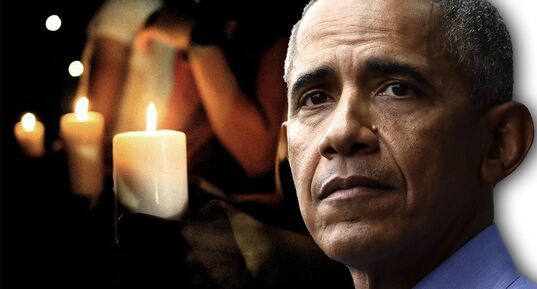 "No other developed nation tolerates the level of gun violence that we do.
"No other developed nation tolerates the level of gun violence that we do.
Every time this happens, we’re told that tougher gun laws won’t stop all murders. But the evidence shows that we can stop some killings,” Obama wrote. “They can save some families from heartbreak.
We are not helpless here. And until all of us stand up and insist on holding public official accountable for changing our gun laws, these tragedies will keep happening.”
One week ago, a gunman killed 22 people and injured 24 more after opening fire inside an El Paso Walmart. In the early hours of Sunday morning, a shooter killed 9 people and injured 27 more in Dayton. Obama further called out the troubling white-nationalist and white-supremacist sentiment in a manifesto believed to have been published by the El Paso shooting suspect on 8chan shortly before the attack, in which he talked of needing to end a “Hispanic invasion” of Texas.
Obama further called out the troubling white-nationalist and white-supremacist sentiment in a manifesto believed to have been published by the El Paso shooting suspect on 8chan shortly before the attack, in which he talked of needing to end a “Hispanic invasion” of Texas.
President Trump’s campaign has run 2,200 Facebook ads using the word “invasion” when referring to immigration since May 2018. He has also used rhetoric similar to that used in the Texas shooter’s manifesto.
“Like the followers of ISIS and other foreign terrorist organizations, these individuals may act alone, but they’ve been radicalized by white nationalist websites. That means that both law enforcement agencies and internet platforms need to come up with better strategies to reduce the influence of these hate groups,” Obama said.
The former president also issued what appeared to be a thinly veiled rebuke of President Donald Trump’s racist and racially inflammatory language against immigrants and non-white Democratic members of Congress.
In mid-July, Trump tweeted that four progressive congresswomen of color should “go back and fix the totally broken and crime-infested places from which they came,” despite three of the four congresswomen being born in the US.
And on July 27, Trump fired off a series of tweets slamming the city of Baltimore and one of its congress members, Rep. Elijah Cummings, over its living conditions.
Trump described the district—which is majority African American—as a “disgusting and rat and rodent-infested mess,” saying of Cummings, “if he spent more time in Baltimore, maybe he could help clean up this very dangerous and filthy place.” He further called it “the worst run and most dangerous anywhere in the United States,” and said “no human being would want to live there.”
Obama wrote, “We should soundly reject language coming out of the mouths of our leaders that feeds a climate of fear and hatred, or normalizes racist sentiments, leaders who demonize those who don’t look like us, or suggest that other people, including immigrants, threaten our way of life, or refer to other people as sub-human, or imply that America belongs to one certain type of people.”
 Words can become the instruments of violence when a subject is dehumanized. Calling asylum seekers an “invasion,” and “infestation” or worse can make it seem to those on the fringe that extermination is a logical solution.
Words can become the instruments of violence when a subject is dehumanized. Calling asylum seekers an “invasion,” and “infestation” or worse can make it seem to those on the fringe that extermination is a logical solution.
A controversial video of President Trump during a rally in Florida is resurfacing on social media after the two mass shootings over the weekend.
In the video, a person yelled, “Shoot them,” when Trump asked the crowd how the US Border Patrol might keep migrants from the entering the country without violence.
Trump smirked and shook his head at the comment, joking, “That’s only in the Panhandle you can get away with this stuff.”
During Monday remarks to address the two shootings, Trump called on social media companies to “detect mass shooters before they strike.”
At the same time, one of his recent tweets read, “We have an INVASION! So we are BUILDING THE WALL TO STOP IT! We want a SAFE COUNTRY!”
Does that sound like a respectable, responsible leader of your country—a country, by the way, that was founded by migrants?
Arizona Republic columnist EJ Montini said in his column today: “Trump led the “birther” movement against former President Obama. He has vilified Muslims. He described those from Africa or Haiti as coming from “s---hole” countries. He gave what appeared to be a stamp of approval to the neo-Nazis in Charlottesville by saying there were “very fine people on both sides.”’
 Montini continued, “There’s an old saying, variously attributed to everyone from Buddha to Mahatma Gandhi that begins:
Montini continued, “There’s an old saying, variously attributed to everyone from Buddha to Mahatma Gandhi that begins:
“Be careful of your thoughts, for your thoughts become your words.
“Be careful of your words for your words become your actions.”
If President Trump is as smart as he says he is, then he knows full well the actions that his words of hate have caused. Yet he continues, knowing full well the consequences of his words.
We CANNOT stand by, gritting our teeth, feeling embarrassed by this president who continually spouts opinions we would never dream of allowing any personal acquaintance to get away with in our presence. Much less the leader of our nation.
 If you aren’t registered to vote, register immediately. Today!
If you aren’t registered to vote, register immediately. Today!
If you are a registered voter, let your Senators and Congressional representatives know that you condemn Trump’s racist, xenophobic, misogynistic and ignorant opinions. AND that you will be reporting to the poles to register your opinion on both the presidential and congressional ballots.
Feel free to use any of the wording in this blog as part of your statement. Copy it. Share it with your added comments. I’ve attributed the original authors, please give them appropriate credit.
As past President Obama says, “We are not helpless here.” It’s time to stop the hating. Time to stop the prejudice. Time to take our country back from this bully running the White House.”
 "No other developed nation tolerates the level of gun violence that we do.
"No other developed nation tolerates the level of gun violence that we do.Every time this happens, we’re told that tougher gun laws won’t stop all murders. But the evidence shows that we can stop some killings,” Obama wrote. “They can save some families from heartbreak.
We are not helpless here. And until all of us stand up and insist on holding public official accountable for changing our gun laws, these tragedies will keep happening.”
One week ago, a gunman killed 22 people and injured 24 more after opening fire inside an El Paso Walmart. In the early hours of Sunday morning, a shooter killed 9 people and injured 27 more in Dayton.
 Obama further called out the troubling white-nationalist and white-supremacist sentiment in a manifesto believed to have been published by the El Paso shooting suspect on 8chan shortly before the attack, in which he talked of needing to end a “Hispanic invasion” of Texas.
Obama further called out the troubling white-nationalist and white-supremacist sentiment in a manifesto believed to have been published by the El Paso shooting suspect on 8chan shortly before the attack, in which he talked of needing to end a “Hispanic invasion” of Texas.President Trump’s campaign has run 2,200 Facebook ads using the word “invasion” when referring to immigration since May 2018. He has also used rhetoric similar to that used in the Texas shooter’s manifesto.
“Like the followers of ISIS and other foreign terrorist organizations, these individuals may act alone, but they’ve been radicalized by white nationalist websites. That means that both law enforcement agencies and internet platforms need to come up with better strategies to reduce the influence of these hate groups,” Obama said.
The former president also issued what appeared to be a thinly veiled rebuke of President Donald Trump’s racist and racially inflammatory language against immigrants and non-white Democratic members of Congress.
In mid-July, Trump tweeted that four progressive congresswomen of color should “go back and fix the totally broken and crime-infested places from which they came,” despite three of the four congresswomen being born in the US.
And on July 27, Trump fired off a series of tweets slamming the city of Baltimore and one of its congress members, Rep. Elijah Cummings, over its living conditions.
Trump described the district—which is majority African American—as a “disgusting and rat and rodent-infested mess,” saying of Cummings, “if he spent more time in Baltimore, maybe he could help clean up this very dangerous and filthy place.” He further called it “the worst run and most dangerous anywhere in the United States,” and said “no human being would want to live there.”
Obama wrote, “We should soundly reject language coming out of the mouths of our leaders that feeds a climate of fear and hatred, or normalizes racist sentiments, leaders who demonize those who don’t look like us, or suggest that other people, including immigrants, threaten our way of life, or refer to other people as sub-human, or imply that America belongs to one certain type of people.”
 Words can become the instruments of violence when a subject is dehumanized. Calling asylum seekers an “invasion,” and “infestation” or worse can make it seem to those on the fringe that extermination is a logical solution.
Words can become the instruments of violence when a subject is dehumanized. Calling asylum seekers an “invasion,” and “infestation” or worse can make it seem to those on the fringe that extermination is a logical solution.A controversial video of President Trump during a rally in Florida is resurfacing on social media after the two mass shootings over the weekend.
In the video, a person yelled, “Shoot them,” when Trump asked the crowd how the US Border Patrol might keep migrants from the entering the country without violence.
Trump smirked and shook his head at the comment, joking, “That’s only in the Panhandle you can get away with this stuff.”
During Monday remarks to address the two shootings, Trump called on social media companies to “detect mass shooters before they strike.”
At the same time, one of his recent tweets read, “We have an INVASION! So we are BUILDING THE WALL TO STOP IT! We want a SAFE COUNTRY!”
Does that sound like a respectable, responsible leader of your country—a country, by the way, that was founded by migrants?
Arizona Republic columnist EJ Montini said in his column today: “Trump led the “birther” movement against former President Obama. He has vilified Muslims. He described those from Africa or Haiti as coming from “s---hole” countries. He gave what appeared to be a stamp of approval to the neo-Nazis in Charlottesville by saying there were “very fine people on both sides.”’
 Montini continued, “There’s an old saying, variously attributed to everyone from Buddha to Mahatma Gandhi that begins:
Montini continued, “There’s an old saying, variously attributed to everyone from Buddha to Mahatma Gandhi that begins:“Be careful of your thoughts, for your thoughts become your words.
“Be careful of your words for your words become your actions.”
If President Trump is as smart as he says he is, then he knows full well the actions that his words of hate have caused. Yet he continues, knowing full well the consequences of his words.
We CANNOT stand by, gritting our teeth, feeling embarrassed by this president who continually spouts opinions we would never dream of allowing any personal acquaintance to get away with in our presence. Much less the leader of our nation.
 If you aren’t registered to vote, register immediately. Today!
If you aren’t registered to vote, register immediately. Today!If you are a registered voter, let your Senators and Congressional representatives know that you condemn Trump’s racist, xenophobic, misogynistic and ignorant opinions. AND that you will be reporting to the poles to register your opinion on both the presidential and congressional ballots.
Feel free to use any of the wording in this blog as part of your statement. Copy it. Share it with your added comments. I’ve attributed the original authors, please give them appropriate credit.
As past President Obama says, “We are not helpless here.” It’s time to stop the hating. Time to stop the prejudice. Time to take our country back from this bully running the White House.”
Published on August 18, 2019 23:23
August 9, 2019
Saying Goodbye to Summer
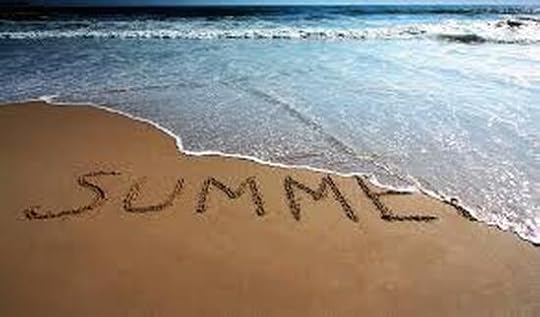 How did it happen? Suddenly it’s the end of summer. The leaves in our yard are turning red. Really?
How did it happen? Suddenly it’s the end of summer. The leaves in our yard are turning red. Really?Back to school sales are in full force. Mothers across the land are hugging their kids goodbye at the door and breathing sighs of relief.
It shouldn’t come as a surprise. As soon as Lammas, or Lughnasadh, passes in early August, I began to lean toward fall. We’ve now passed the first of the three harvest festivals, the other two being Mabon (the autumnal equinox), and Samhain.
Right now we’re on the edge where one season meets the next, a magical no-man’s land, an invisible shift.
August is like the Sunday of summer. It’s deceptive because the temperature may still be hot and summery. But I feel the difference, and so does the land surrounding our cabin.
The Ponderosa pine sap begins to build, holding its breath, waiting to run and bring its sweet vanilla scent to the forest. The grapes on our arbor are still sour, but turning purple. It’s time to put them in little paper bags to ripen, remembering to leave a few clusters uncovered for the birds. The nights get cooler, and we sleep under a comforter with the windows thrown open to enjoy the breeze.
In my life I have prepared, planted, and muddled through, to finally reach the point where I can see completion in front of me. I can peer forward through the mists of the future, and know I will be able to harvest what I’ve planted. It brings a sense of calm to life, an inner contentment. Is this what people are talking about when they say, “The golden years?”
This whole summer I’ve been back and forth, up and down the freeway, careening around the mountain switchbacks between our main house in Phoenix and the cabin in the woods we call home in summer. It’s been exhausting and the summer has passed in a blur of inconvenient and unpleasant doctor and dentist appointments. Maybe this is what comes in the Golden Years.
The good news: we have another six weeks of this summer to enjoy. I was going to have a garage sale over Labor Day weekend, but an end-of-the-cabin- season party sounds like more fun. I’ve sent out invitations to all of the people who contribute to our community newspaper. I’m looking forward to hosting a goodbye bash, sharing our new patio, decorated with electric torches that look like flames, and the beautiful lush green lawn (a rarity in Arizona).
After that, I plan to usher in fall with daily forest walks with the dogs. They’re so happy to run in front of me off-leash, sniffing dried cow pies and chasing squirrels. Another sign of summer’s end: The cowboys have rounded up the cows that share our forest all summer.
I’m not sure where they take them next. Sounds like a good research topic for next summer’s newspaper column.
Until then, enjoy your last few weeks, and Blessed Be.
Published on August 09, 2019 13:24
July 25, 2019
Home Hazards for Your Dog
 The author's dog, Teak, loves balls and Frisbees. He's not good at returning either. Your back yard and garden is the perfect place for your dog to exercise and have fun, but even a fenced yard can be potentially dangerous.
The author's dog, Teak, loves balls and Frisbees. He's not good at returning either. Your back yard and garden is the perfect place for your dog to exercise and have fun, but even a fenced yard can be potentially dangerous.If you want to create a dog-friendly area, here are some substances to fence out of reach of your pets.
Acorns – The toxic ingredient in acorns is tannic acid, which can cause damage to the liver and kidneys.
Antifreeze – Speaking of your garage, be aware that antifreeze can cause deadly kidney failure in dogs. The main ingredient in antifreeze, ethylene glycol, tastes sweet and is attractive to dogs. Because poisoning has been a serious issue, all major antifreeze manufacturers have recently agreed to add bittering agents to their products to reduce canine and human exposures. However, older products may still be lurking in your garage. If you own a dog, don’t store antifreeze and don’t let your car’s radiator leak.
Artificial Sweeteners – Xylitol, a popular artificial sweetener commonly found I sugar-free candy and gum, is extremely dangerous for both dogs and cats causing a spike in insulin and a severe drop in blood glucose. If not treated immediately, pets will develop hypoglycemic seizures and go into shock. Symptoms begin suddenly and will result in death without medical intervention. If you own dogs, it’s best not to stock any products containing xylitol.
 Chocolate – A compound in chocolate called theobromine is toxic to both dogs and cats. It can cause hyperactivity, cardiac arrhythmia, seizures, even death. The compound is more plentiful in darker chocolate but even milk and white are dangerous.
Chocolate – A compound in chocolate called theobromine is toxic to both dogs and cats. It can cause hyperactivity, cardiac arrhythmia, seizures, even death. The compound is more plentiful in darker chocolate but even milk and white are dangerous.There is no antidote for chocolate poisoning. However, veterinarians may induce vomiting, administer activated charcoal, and/or provide intravenous fluid to help flush toxins out of the body. If the ingestion and treatment is performed in the first four hours, the prognosis is good.
Compost –Moldy food and garden waste in compost can produce dangerous mycotoxins which are highly dangerous to dogs. Mycotoxicosis, which is poisoning by-products contaminated by fungi, can be fatal. Keep your compost out of reach, and seek urgent veterinary advice if you suspect your dog has eaten the contents of a compost bin.
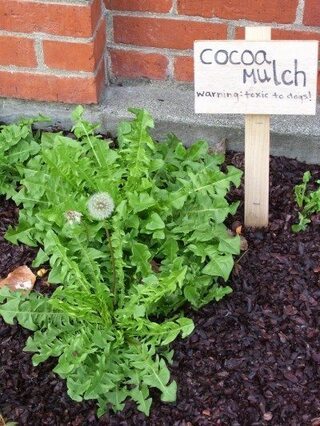 Cocoa Garden Mulch – Pets are attracted to the chocolaty aroma, but the ingredients in cocoa mulch can be deadly if ingested. It contains cocoa bean shells (poisonous to dogs and cats), combined with chemicals that can lead to vomiting, diarrhea, muscle tremors, seizures and death. As lovely as cocoa mulch looks and smells in your yard, choose a safer alternative if you own dogs.
Cocoa Garden Mulch – Pets are attracted to the chocolaty aroma, but the ingredients in cocoa mulch can be deadly if ingested. It contains cocoa bean shells (poisonous to dogs and cats), combined with chemicals that can lead to vomiting, diarrhea, muscle tremors, seizures and death. As lovely as cocoa mulch looks and smells in your yard, choose a safer alternative if you own dogs.Cooked Bones – though it may seem counter-intuitive, cooked bones are dangerous treats for dogs. They splinter easily and can puncture delicate gastrointestinal tissue, leading to a life-threatening condition called peritonitis that occurs when intestinal contents leak into the abdominal cavity. The only treatment is surgery.
Fabric Dryer Sheets – If your house is like mine, these little buggers show up everywhere. They have a lot of uses beyond the laundry room, from freshening drawers to removing dust from ceiling fans, blinds and computer or TV monitors.
There’s even a dangerous hack that recommends rubbing your pet’s coat with a dryer sheet to calm them during electrical storms by reducing the static electricity in their fur. But beware! Many (read most) dryer sheets contain ingredients that can be toxic to your pet. Go for a plant-based version such as Method (Beach Sage) or Seventh Generation Natural. Better yet, don’t use them on your pets. The same goes for bedding—skip the liquid fabric softener here also.
Fertilizers- If your dogs are like ours, they love to roll around on a grassy lawn. Fertilizers can be highly toxic to dogs, and it’s easy for your dog to come into contact when your sprinkle or spray it over a lawn or garden.
Organic fertilizers may sound safe, but they’re often worse. Natural/organic fertilizers contain “meals” left over in the farming or meat industries—bone meal, blood meal and fish meal. These products may smell attractive to your pet but they are not good for their digestive systems.
Products with additives such as insecticides are even more dangerous
Marijuana – If you have a dog, keep an eye on your stash! Although edible marijuana products are the most attractive to dogs, they’ve been known to consume baggies of buds straight up. It used to be marijuana toxicity usually wasn’t fatal, but there have been result fatalities after consumption of medical-grade products.
Mushrooms – While not every mushroom is toxic, it’s best to remove all mushrooms from yards where pets might eat them. If you see your dog eating a wild mushroom, seek veterinary care. If caught early, the vet can induce vomiting and avoid many of the negative effects. Try to bring one of the mushrooms with you to the vet.
 Human Pain Relievers
Human Pain Relievers Ibuprofen, Acetaminophen, any other NSAID, aspirin – while it might be a temptation to help out a four-legged friend with arthritis or other pain, DON’T’ DO IT! These are all toxic for both dogs and cats.
Pest-Control Products – Household pests certainly are nuisances. Snails and slugs destroy vegetable gardens, gophers dig up the yard, and mice and rats cause damage and contamination (and eat our citrus in Arizona).
But the poisons designed to kill these pests also can kill dogs. Gopher bait liberates phosphide gas into dogs’ intestines, causing intestinal necrosis. A painful death can follow. Snail and slug bait causes tremors and seizures—and again painful death.
 Rat and mouse bait either contains products that prevent coagulation—leading to life-threatening hemorrhage—or a product that causes brain swelling and death.
Rat and mouse bait either contains products that prevent coagulation—leading to life-threatening hemorrhage—or a product that causes brain swelling and death. An antidote exists for the hemorrhage-causing products, but they are being phased out in favor of the product that causes brain swelling, and for which there is no antidote.
All of these pesticides come in forms that are designed to be attractive to live pests—and are therefore also attractive to dogs. Don’t keep them in your house or garage.
Toads – Toads produce a venom through their skin when they’re under attack, and it can be fatal if left untreated. The toxins cause dogs to foam at the mouth, vomit, and show signs of distress such as pawing at the mouth and eyes. Take your dog to the vet if it displays any of the above signs after getting a hold of a toad.
Weed Killer – Many weed killers contain glyphosate. It’s dangerous if swallowed, licked, or brushed against. If you plan to use weed killer, keep your dog inside to avoid any problems.
 Toxic Weeds – These weeds are known to be toxic to dogs: Foxglove, Devil’s Weed, Poison Oak, and Poison Hemlock.
Toxic Weeds – These weeds are known to be toxic to dogs: Foxglove, Devil’s Weed, Poison Oak, and Poison Hemlock.Other weeds have parts that can break off and become lodged in your dog’s skin. The most common culprit is Foxtail. It’s one of the most dangerous weeds your dog can get into. Foxtail is a type of grass with seeds. These barbed seeds can enter your dog’s mouth, nose or ears. They can also become embedded in your dog’s feet, skin or genital area. They have an arrow shape that enables them to travel, and they can dive deep into any orifice, well beyond sight. Not only is the dog’s body incapable of degrading or decomposing the foxtails, these plants are barbed in such a way that they can only more in a “forward” direction. Unless caught early, surgery may be required to extract the irritant.
 Sago Palms – These striking ornamental palms are phenomenally toxic for dogs. We’re talking liver failure, uncontrollable hemorrhage and death. I have one of these, but luckily it’s in the front yard and out of limits.
Sago Palms – These striking ornamental palms are phenomenally toxic for dogs. We’re talking liver failure, uncontrollable hemorrhage and death. I have one of these, but luckily it’s in the front yard and out of limits.Of course, this isn’t the only plant/flower toxic for dogs. I’ve listed the most common below. Plants, Garden and Household Substances Poisonous to Dogs & Cats
Plants
 Azalea
AzaleaNOTE: Plants in Bold can be fatal
African Violet, Aloe Vera, Amaryllis (bulbs), Asparagus Fern, Azalea, Baby’s Breath, Bird of Paradise, Bittersweet, Bleeding Heart, Bluebell, Boxwood, Caladium, Calla lily, Castor Bean, Chrysanthemum, Clematis, Cocoa husks or mulch, Crocus, Cyclammen, Daffodil (bulbs), Datura,
 Datura
DaturaDeadly Nightshade, Delphinium, Dieffenbachia, Dumb Cane
Easter Lily (especially poisonous to cats), Elephant Ears, English Ivy, Foxglove, Geranium
Heavenly Bamboo, Hellebore, Hemlock, Henbane, Hibiscus, Holly (berries), Hyacinth (bulbs), Iris (roots), Jack in the Pulpit, Jimson Weed (Thorn Apple)
Lantana, Larkspur, Laurel, Lily, Lily of the Valley, Lobelia, Maple Tree, Marijuana, Milkweed, Mistletoe (berries), Morning Glory, Mother-in-law’s Tongue, Mountain Laurel
Oleander, Pencil Cactus, Peony (roots), Philodendron, Poinsettia (leaves, stems and sap), Poison Ivy, Poison Hemlock, Poison Oak, Poison Sumac, Primrose
Ragwort, Rhododendron, Rue, Sago Palm, Spider Plant, Tiger Lily (especially for cats), Tobacco plant, Tulip
Walnut, Water Hemlock, Weeping Fig, Wild cherry (twigs and foliage), Wolfsbane, Yarrow, Yew (berries and foliage). Vegetables & Fruits:
 Note: Fruits & Vegetables in Bold can be fatal Apple and Apricot seeds, Avocado, Broccoli, Cherry pits, Peach (stones and leaves), Garlic, Grapes
Note: Fruits & Vegetables in Bold can be fatal Apple and Apricot seeds, Avocado, Broccoli, Cherry pits, Peach (stones and leaves), Garlic, GrapesMushrooms, Nuts (all, but particularly Brazil, walnut, pecan, pistachios, macadamia and peanuts)
Onion, Persimmon seeds, Potato (green skin and sprouts), Raisins, Rhubarb
Tomato Plant (green fruit, leaves and stems).
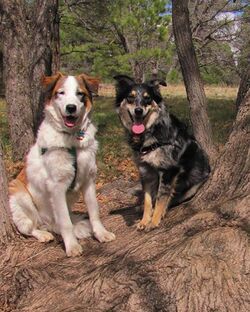 My happy boys, Woody and Teak The bottom line is this: We’re a nation of dog lovers, and we welcome our furry best friends into our homes as one of our own.
My happy boys, Woody and Teak The bottom line is this: We’re a nation of dog lovers, and we welcome our furry best friends into our homes as one of our own. But as tempting as it is to throw your dog the odd table scrap or treat, or even let them forage, it is very important to make sure you know what can be harmful to your pet.
If you have any doubt that they might have eaten something they shouldn’t, or if they are showing any signs of distress or unusual behavior, check in with your vet right away.
Until next week, be happy: Hug your pet!
Published on July 25, 2019 20:32
July 16, 2019
Outlander's Diana Gabaldon
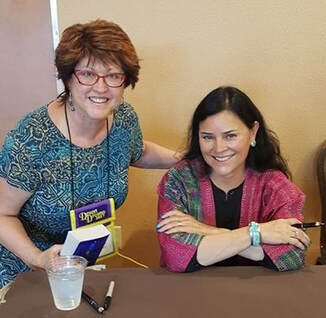 I have had the pleasure of listening to Diana Gabaldon, author of the Outlander series, speak twice in the last two years. She gave us insights on her writing process.
I have had the pleasure of listening to Diana Gabaldon, author of the Outlander series, speak twice in the last two years. She gave us insights on her writing process.“In 1988, I decided to write a novel, just for practice, to learn how to write,” Gabaldon says. “I had no intention of showing it to anyone.” She was a research professor at Arizona State at the time, so she decided a historical novel would be the easiest to research and write.
She had just watched a rerun of the Doctor Who TV series, “He had a young 17-year-old Scots lad that he’d picked up in 1745,” she explains. “He appeared in his kilt, you know. And I thought, well, that’s rather fetching.” It didn’t matter where and when she set the book, she was going to have to look up everything anyway. “So I said, Scotland 18th century it is.”
And the leading male character, Jamie Frasier, was conceived.
 By the way, when Gabaldon first saw actor Sam Heughan, who plays Jaimie Frasier in the Starz TV series, she knew they had cast the right man. “That man is a Scot to the bone and Jamie Fraser to the heart.”
By the way, when Gabaldon first saw actor Sam Heughan, who plays Jaimie Frasier in the Starz TV series, she knew they had cast the right man. “That man is a Scot to the bone and Jamie Fraser to the heart.”She set her handsome Highlander and his Scottish clan as a supporters of the Jacobites, defending his family home against the Protestant English militia.
“About the third day of writing, I decided, ‘I’ll have a female character to play off all these men in kilts. And given that we’re dealing with the Jacobite uprising, perhaps I should make her an Englishwoman. That way, we’ll have lots of conflict built in.”
Gabaldon stops to take a breath and a sip of water. She talks really fast, you have to pay close attention to her Laure Bacall-type throaty voice. And she’s articulate. No “uhs,” “uhms” or pauses to choose her words. The woman is a born story-teller.
“So, I introduced her, and the minute I put her in, she refused to talk like an 18th century person. She immediately started making smartass modern remarks, and she also started telling the story herself. I said, “If you’re going to fight me all the way through the book, go ahead and be modern, and I’ll figure out how you got there later.”
The audience laughs and she adds, “It’s all Claire’s fault that there’s time travel in it.”
From then on, the story centered on Claire, a former combat nurse, who takes a second honeymoon to Scotland in 1946 with her husband, Frank.
 Out for a walk one morning near Inverness, she stumbles upon Craigh na Dun, and ancient circle of stones that turns out to be a portal to the past, and Claire slips through to 1743. Before she can even blink, she finds herself in mortal danger and is rescued by the handsome kilted clansman Jamie Fraser.
Out for a walk one morning near Inverness, she stumbles upon Craigh na Dun, and ancient circle of stones that turns out to be a portal to the past, and Claire slips through to 1743. Before she can even blink, she finds herself in mortal danger and is rescued by the handsome kilted clansman Jamie Fraser.Creating a richly layered, multisensory world is important to Gabaldon, and she is really, really good at it. In fact, the attention to detail, including historical facts, is one of the reasons Outlander resonates with so many readers. It makes the books transportive.
She writes with such deep familiarity for the land and people that I was surprised to learn she had never visited Scotland when she wrote Outlander, the first book in her series.
In fact, she was born and raised in Flagstaff. He father, Tony Gabaldon (1931–1998), was an Arizona state senator from Flagstaff for sixteen years and later a supervisor of Coconino County. Her ancestors are not Scottish either. Her father was of Mexican ancestry, and her mother was English.
But Gabaldon’s immersive style propels readers into the world she is describing. “I start with a kernel—an object, a vivid image, a line of dialogue—and I write down a line or two that attempts to capture where that was,” she says. “Writing immersively is a matter of technique but also seeing what’s there that’s having a sensory effect. If you use any three or more of the five senses in a scene, that scene will become three-dimensional, and readers will feel like they’re there.”
It took her about 18 months to write Outlander. Keep in mind, however, the book is 850 pages in trade paperback, or about 213,000 words. You writers out there who despair of ever finishing your novel take heart. Gabaldon, who was working full time during her first novel, with three kids and a spouse, wrote approximately 400 words a day between midnight and 3:00am, slipping in a short nap before she began.
The thing that amazes me is that she writes without a net: no outline, character sketches or plot plan. "I don't write in a straight line at all," she says "I just write bits and pieces and then glue them together."
Her unorthodox approach results in magic. When, during Q&A, I commented that writing without a plan would be terrifying, her reply was pure poetic Diana Gabaldon: "It's like raising new continents. You look out over this vast sea and you see volcanoes popping up here and there. As they rise and lava goes down the sides, mountains form, and then gradually it all becomes clear. You begin to see how one mountain flows down into a valley and up into another. To start with all you see are the mountains, but gradually, you can look below the surface and see the connections."
Gabaldon is currently working on the ninth book in the Outlander series, Go Tell the Bees That I Am Gone.
The Outlander film series based on the novels is available on Netflix and Starz.
Published on July 16, 2019 11:21
July 7, 2019
Little Free Libraries
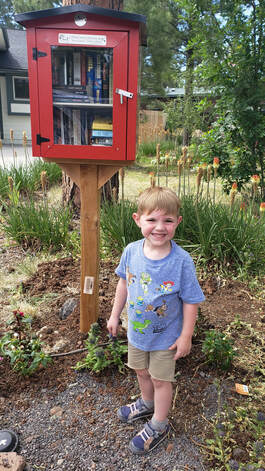 Are you a bookworm? Do you spend a great deal of time purchasing books online or from your local bookstores?
Are you a bookworm? Do you spend a great deal of time purchasing books online or from your local bookstores?Then you will love the tiny library phenomenon that has probably already hit your neighborhood. You just have to know where to look.
I was amazed to find that, with the addition of my library last week, even our little mountain community of Munds Park has a total of 5 Little Free Libraries.
These adorable tiny libraries are part of a larger social movement that started in 2009, when Tod Bol of Hudson, Wisconsin, built a birdhouse-like replica of a one-room schoolhouse and mounted it in his front yard, as a tribute to his mother, who was a teacher. He filled the little box with free books, and a sign that said, “Take a book, leave a book.”
The movement caught on. A registered non-profit since 2012, Little Free Library now boasts more than 80,000 wee branches in 91 countries.
It’s easy to create a tiny library. Simply build (or upcycle) a water-tight structure, place it in a publicly accessible location on your property (if near a road, make sure there is a safe place to pull off the road and get out. Add some books you’d like to re home, and wait for your readers to arrive. To ensure the library is always stocked, a “take a book, leave a book” honor system should be posted on the box.
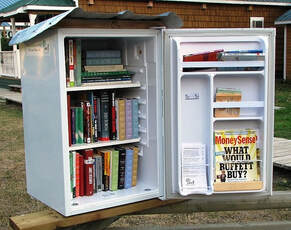 Little Free Library enthusiasts are encouraged to build their own designs. Here’s an old refrigerator that was used in a dorm and now has be re-purposed. It required no renovations, by the way. Just add books!
Little Free Library enthusiasts are encouraged to build their own designs. Here’s an old refrigerator that was used in a dorm and now has be re-purposed. It required no renovations, by the way. Just add books!You can also build your own, following the instruction for the classic Little Free Library kits on the group’s website.
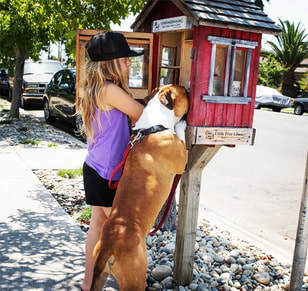 The website also gives clear directions for mounting the libraries on posts so they are protected and accessible to eager neighborhood readers.
The website also gives clear directions for mounting the libraries on posts so they are protected and accessible to eager neighborhood readers.If starting from scratch isn’t your thing, Little Free Library models are available for order, including a 100% recycled wood and plastic model with a quaint pitched roof.
 Don't you love the Snoopy and Woodstock this homeowner added to their simple wooden box?
Don't you love the Snoopy and Woodstock this homeowner added to their simple wooden box?There are plenty of library custodians who go above and beyond to make their tiny pop-up libraries stand out. After all, these structures aren’t just about education –they’re also about community and the arts.
 For example, architectural designer John Locke has repurposed four phone booths in New York City as pop-up libraries. His aim is to preserve the special social space that phone booths provide in cities. Books for his kiosks, part of his Department of Urban Betterment project, are donated by local residents. Locke designs and makes the plywood shelving that he then hangs from the booths, which are still fully functional for calls.
For example, architectural designer John Locke has repurposed four phone booths in New York City as pop-up libraries. His aim is to preserve the special social space that phone booths provide in cities. Books for his kiosks, part of his Department of Urban Betterment project, are donated by local residents. Locke designs and makes the plywood shelving that he then hangs from the booths, which are still fully functional for calls. The re-purposing concept is adopted in Europe as well. In 2002, British Telecom had 92,000 phone boxes in Britain, but about half of them were removed due to the popularity of mobile phones.
The re-purposing concept is adopted in Europe as well. In 2002, British Telecom had 92,000 phone boxes in Britain, but about half of them were removed due to the popularity of mobile phones. Rather than rip out the rest, the company came up with Adopt a Kiosk program in 2009. Communities were offered the chance to buy one of the iconic red telephone boxes for 1 pound and encouraged to turn them into spaces that local residents would actually use.
The scheme has been a great success, and more than 1,500 of the boxes have been converted to grocery stores, wildlife information centers, tea rooms, art galleries, defibrillator points and—you guessed it---tiny libraries.
The popularity of the iconic red box quickly moved across the pond. Free Little Library offers a version of the mini British Phone Booth library for sale.
 Hey, Munds Park! This Log Cabin design would be perfect in a front yard!
Hey, Munds Park! This Log Cabin design would be perfect in a front yard!Here are some of my other favorite designs to inspire you.
 "Books are magic and everyone needs a little magic in their lives. This Little Free Library is an ode to Harry Potter and the wonderful J.K. Rowling.
"Books are magic and everyone needs a little magic in their lives. This Little Free Library is an ode to Harry Potter and the wonderful J.K. Rowling. We hope you grab a book that speaks to you and get lost in the simple magic of reading."
Allison S.
Pottstown, PA
 I would put this one in my yard in a heartbeat!
I would put this one in my yard in a heartbeat!
 Surely this family has kids.
Surely this family has kids.
 It seems there's a little Library for any interest you'd like to display.
It seems there's a little Library for any interest you'd like to display. 
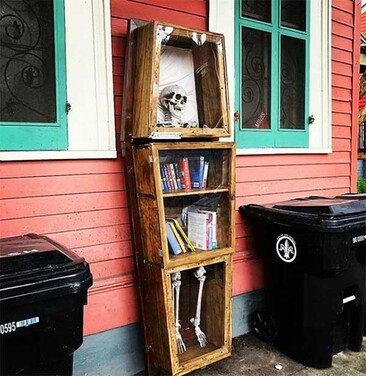 I love this one, but I wouldn't stash its cuteness between my trash bins.
I love this one, but I wouldn't stash its cuteness between my trash bins. Be proud of your perversity! Into the front yard you go!

Published on July 07, 2019 18:51
June 30, 2019
Santana Supernatural Now Concert
 Last weekend my husband and I re-visited our youth and attended an outdoor concert by Santana, along with warm-up band Doobie Brothers.
Last weekend my husband and I re-visited our youth and attended an outdoor concert by Santana, along with warm-up band Doobie Brothers.The concert kicked off Santana’s 29-city Supernatural Now Tour, which commemorates two of the legendary guitarist’s most momentous occasions: the 20th anniversary of his multi-Grammy-award winning album, Supernatural, and the 50th anniversary of his historic performance at Woodstock.
In 1969, when Carlos Santana and his band walked onto the stage at the legendary Woodstock Music Festival, they were unknowns. They didn’t even have an album released.
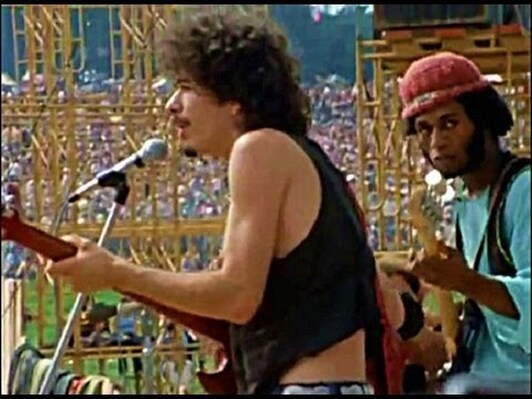 The band’s set was one of the surprises of the festival, highlighted by an eleven-minute performance of a throbbing instrumental, "Soul Sacrifice". Its inclusion in the
Woodstock
film and soundtrack album vastly increased Santana’s popularity. Santana’s producer suggested the band record the Willie Bobo song "Evil Ways", as he felt it would get radio airplay. The band's first album,
Santana
, was released in August 1969 and became a huge hit, reaching #4 on the U.S. album charts.
The band’s set was one of the surprises of the festival, highlighted by an eleven-minute performance of a throbbing instrumental, "Soul Sacrifice". Its inclusion in the
Woodstock
film and soundtrack album vastly increased Santana’s popularity. Santana’s producer suggested the band record the Willie Bobo song "Evil Ways", as he felt it would get radio airplay. The band's first album,
Santana
, was released in August 1969 and became a huge hit, reaching #4 on the U.S. album charts.Santana followed with their second album, Abraxas , in September 1970.
 The mix of rock, blues, jazz, salsa and other influences was very well received, showing a musical maturation from their first album and refining the band's early sound.
The mix of rock, blues, jazz, salsa and other influences was very well received, showing a musical maturation from their first album and refining the band's early sound.Abraxas included two of Santana's most enduring and well-known hits, "Oye Como Va", and "Black Magic Woman/Gypsy Queen".
Abraxas spent six weeks at #1 on the Billboard chart at the end of 1970. The album remained on the charts for 88 weeks and was certified 4x platinum in 1986. In 2003 the album was ranked number 205 on Rolling Stone magazine's list of the 500 greatest albums of all time.
Our Phoenix concert featured a four-song opener, starting with “Soul Sacrifice” and ending with “Evil Ways” that was perfection! High energy, flawlessly executed—so good that we had to dance instead of taking photos.
Those early 1970s songs were my favorite Santana classics for decades. But the best was yet to come, including one of the most amazing comebacks in rock history.
Clive Davis, who had worked with Santana a decade earlier at Columbia Records, signed Carlos Santana and his band, and encouraged him to record a star-studded album with mostly younger artists.
The result was 1999's Supernatural, which included collaborations with Everlast, Rob Thomas of Matchbox Twenty, Eric Clapton, Lauryn Hill, Wyclef Jean, Cee Lo Green, Dave Matthews and others.
However, the lead single was what grabbed the attention of both the music industry, and fans (including me). "Smooth”, a dynamic cha-cha stop-start number co-written and sung by Rob Thomas of Matchbox Twenty, was laced throughout with Santana's guitar fills and runs.
“Smooth” spent 12 consecutive weeks at number one on the Billboard Hot 100 in 1999. It was the first chart-topping song in Carlos Santana’s long-running career (even bigger than “Black Magic Woman”, which peaked at number 4 in 1971.
 Santana’s resurgence culminated with a sweep of the 42nd Annual Grammy Awards on February 23, 2000. That night, Santana and Supernatural won Grammys in nine categories: Record of the Year and Song of the Year ("Smooth"); Album of the Year and Best Rock Album (Supernatural); Best Pop Collaboration With Vocals ("Smooth," with Rob Thomas); Best Pop Instrumental ("El Farol"); Best Rock Performance by a Duo or Group ("Put Your Lights On,” with Everlast); Best Rock Instrumental ("The Calling,” with Eric Clapton); and Best Rock Performance by a Duo or Group with Vocals ("Maria Maria").
Santana’s resurgence culminated with a sweep of the 42nd Annual Grammy Awards on February 23, 2000. That night, Santana and Supernatural won Grammys in nine categories: Record of the Year and Song of the Year ("Smooth"); Album of the Year and Best Rock Album (Supernatural); Best Pop Collaboration With Vocals ("Smooth," with Rob Thomas); Best Pop Instrumental ("El Farol"); Best Rock Performance by a Duo or Group ("Put Your Lights On,” with Everlast); Best Rock Instrumental ("The Calling,” with Eric Clapton); and Best Rock Performance by a Duo or Group with Vocals ("Maria Maria").  Photo by Libby Fabro
Photo by Libby FabroWhen Rob Thomas came on stage in Phoenix to perform “Smooth,” Carlos thanked him for composing the hit for Santana, singing it with them, and for reviving his career.
But beyond all the awards and sales, Supernatural carries a higher meaning for Carlos Santana. As he told Rolling Stone, “It’s a personal invitation from me to people: remember your divinity.”
Even if you’ve seen Santana before, go and witness his current concert if you can. Carlos Santana is 71, but he’s still at the top of his game, and his bandmates are star-studded and amazing.
 Santana has spoken freely about his spirituality, and how he strives to add love to a world that he says is “infected with fear.” The last set was like participating in energy raising at the climax of a ritual: Spiraling, chaotic energy that built to a crescendo, until it is released in a prayer for peace and love.
Santana has spoken freely about his spirituality, and how he strives to add love to a world that he says is “infected with fear.” The last set was like participating in energy raising at the climax of a ritual: Spiraling, chaotic energy that built to a crescendo, until it is released in a prayer for peace and love.I’m tempted to go to his concert again when the tour hits Vegas this fall, and see if my theory is accurate, once the show is fully refined.
Plus, the Doobie Brothers to lead off…Three hours of musical heaven!
Carlos Santana has collaborated with so many diverse performers throughout his fifty-year career. Who would he like to work with next?
“Sting,” he says.
Oh yea, sign me up for that one too!
 Santana / The Doobie Brothers — Remaining 2019 Tour Dates
Santana / The Doobie Brothers — Remaining 2019 Tour DatesJuly 2 – Salt Lake City, UT @ USANA Amphitheatre
July 3 – Denver, CO @ Pepsi Center
July 6 – Dallas, TX @ Dos Equis Pavilion
July 9 – Austin, TX @ Austin360 Amphitheater
July 11 – Kansas City, MO – Sprint Center
July 12 – St. Louis, MO @ Hollywood Casino Amphitheatre
August 3 – St. Paul, MN @ Xcel Energy Center
August 4 – Chicago, IL @ Hollywood Casino Amphitheatre
August 6 – Toronto, ON @ Budweiser Stage
August 7 – Cleveland, OH @ Blossom Music Center
August 9 – Indianapolis, IN @ Ruoff Home Mortgage Music Center
August 10 – Cincinnati, OH @ Riverbend Music Center
August 11 – Detroit, MI @ DTE Energy Music Theatre
August 13 – Charlotte, NC @ PNC Music Pavilion
August 14 – Washington, DC @ Jiffy Lube Live
August 16 – Darien Center, NY @ Darien Lake Amphitheater
August 18 – Holmdel, NJ @ PNC Bank Arts Center
August 20 – Boston, MA @ Xfinity Center
August 21 – Hartford, CT @ XFINITY Theatre
August 23 – Saratoga, NY @ Saratoga Performing Arts Center
August 24 – Camden, NJ @ BB&T Pavilion
August 25 – Wantagh, NY @ Northwell Health at Jones Beach Theater
Published on June 30, 2019 11:57
June 16, 2019
Summer Solstice at V-Bar-V
The sun reaches its highest point and power at noon on June 21st – the Summer Solstice, also known as Litha, or Midsummer.
I’m not a morning person, but I plan to rise and meet the solstice sun, just as the Ancients have done for centuries. Many worshipers, like those at Stonehenge, built temples to catch those first rays of sun on the Summer Solstice.
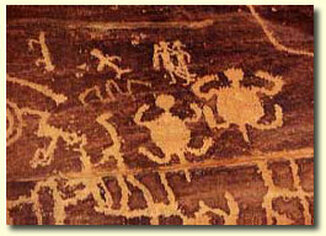 Last weekend I visited an ancient Native sun marker closer to home, called the V-Bar-V.
Last weekend I visited an ancient Native sun marker closer to home, called the V-Bar-V.
This little-known site near Sedona, Arizona, consists of tall rock wall slabs with 1,032 petroglyphs carved into the rock surface by a people known as the Sinagua.
The petroglyphs are done in what’s called the Beaver Creek style, and include images of turtles, deer, birds, humans and snakes, as well as spirals, concentric circles, and zigzag lines.
The designs and their placement are far from random. They have archaeoastronomical significance. There, on both the Vernal Equinox and the Summer Solstice, an annual miracle occurs. The sun rises over the top of the carved petroglyph walls, and bands of light pass between “guide” rocks to illuminate specific points in the figures permanently etched in the stone.
 The figures illuminated indicate it’s time to plant: The first planting on the equinox, the corn on the Summer Solstice, so it will be up and established when the monsoon rain arrives in early July.
The figures illuminated indicate it’s time to plant: The first planting on the equinox, the corn on the Summer Solstice, so it will be up and established when the monsoon rain arrives in early July.
The Sinagua people had designated “sunwatchers” who closely observed the passage of the sun throughout the year. One large panel at V-Bar-V, referred to as the “solar panel,” exhibits unique shadow patterns created by three boulder wedged into the rock face.
Scientists have worked with regional modern-day tribes to decipher the petroglyphs, and they’ve discovered that the rock slabs act as a solar calendar. The play of light and shadow across the cliff face mark the precise dates of the Vernal Equinox and Summer Solstice, as well as monsoon season, important events for planting and harvesting.
In his book about the V-Bar-V site, Sinagua Sunwatchers, Kenneth Zoll also suggests the shadows cast duplicates the ridgeline of the San Francisco Peaks (as viewed from the Wupatki National Monument area southeast of the mountains). Located about 45 miles north of the V-Bar-V, the San Francisco Mountains are sacred to several native tribes in Arizona, including various Pueblo groups and the Navajo. These prominent mountains are the home of the katsinas, ancestral spirits who bring the rain clouds to the Hopi villages.
There is also a petroglyph that acts as an aerial map of Wet Beaver Creek. Despite 800-plus years of erosion and natural changes to the river, the map still holds up incredibly well.
Unlike most of arid Arizona, Wet Beaver Creek is one of the perennially flowing tributaries of the Verde River. Fed by an underground stream, it provides permanent water, a lush riparian habitat, and alluvial soils--a combination that have attracted people to its banks for several millennia. Montezuma Castle, Montezuma Well, Lake Montezuma Ruin, V-Bar-V and Sacred Mountain Ruin are all major Anasazi and Sinagua sites located in an approximate 20-mile stretch along the creek.
At all of these now-abandoned sites, people look across the dusty red earth and think, “why on earth would people pick this place to live?” Then the guide says, “Wait. Listen carefully,” and they quiet themselves and hear the water, completely out of place in the landscape. Most importantly, never ending, due to the underground springs.
It’s impossible to know exactly what the Sinagua intended to convey through their petroglyph imagery beyond the solar calendar.
When I visit, I always allow enough time enjoy the sense of peace, the sound of the wind in the cottonwoods and the gurgle of the nearby stream. I examine the figures and try to interpret the messages that come to me. Researchers have named the wall in the photos above the solar calendar wall.
 I’ve named THIS panel the “Moon wall” and I think it depicts a shaman-like figure from an ancient Hopi story (the Hopi are suspected to be the descendants of both the Sinagua and Anasazi). The story tells of a race of ten-foot people who appeared from the sky.
I’ve named THIS panel the “Moon wall” and I think it depicts a shaman-like figure from an ancient Hopi story (the Hopi are suspected to be the descendants of both the Sinagua and Anasazi). The story tells of a race of ten-foot people who appeared from the sky.
Unfortunately, this moon panel is slowly eroding away, so we may never know.
“As above, so below” is the theme of the Summer Solstice, when day and night are equal and the world falls into a magical balance, an “in-between time. So take a moment to reflect on your time on this earth, and the timing of your life’s actions.
Timing is everything. When to plant, when to sow.
When to pause and listen.
When to speak and communicate. And to do so before those chances in your life erode away, like the Sinagua images on a moon wall.
The Summer Solstice is a crossroads. Next week, the world will literally begin filling with darkness, as the Wheel turns ever slowly toward winter and the end of another year. Until then, we stand at the world’s still center and survey which path to choose.
So look in the mirror. Meet the eyes you see there directly, because they belong to the only person in this world you can truly change. Be attentive to the thresholds and boundaries of your life—the places where metamorphosis occurs. Find the lines want to allow to erase—or re-draw.
I’m not a morning person, but I plan to rise and meet the solstice sun, just as the Ancients have done for centuries. Many worshipers, like those at Stonehenge, built temples to catch those first rays of sun on the Summer Solstice.
 Last weekend I visited an ancient Native sun marker closer to home, called the V-Bar-V.
Last weekend I visited an ancient Native sun marker closer to home, called the V-Bar-V.This little-known site near Sedona, Arizona, consists of tall rock wall slabs with 1,032 petroglyphs carved into the rock surface by a people known as the Sinagua.
The petroglyphs are done in what’s called the Beaver Creek style, and include images of turtles, deer, birds, humans and snakes, as well as spirals, concentric circles, and zigzag lines.
The designs and their placement are far from random. They have archaeoastronomical significance. There, on both the Vernal Equinox and the Summer Solstice, an annual miracle occurs. The sun rises over the top of the carved petroglyph walls, and bands of light pass between “guide” rocks to illuminate specific points in the figures permanently etched in the stone.
 The figures illuminated indicate it’s time to plant: The first planting on the equinox, the corn on the Summer Solstice, so it will be up and established when the monsoon rain arrives in early July.
The figures illuminated indicate it’s time to plant: The first planting on the equinox, the corn on the Summer Solstice, so it will be up and established when the monsoon rain arrives in early July. The Sinagua people had designated “sunwatchers” who closely observed the passage of the sun throughout the year. One large panel at V-Bar-V, referred to as the “solar panel,” exhibits unique shadow patterns created by three boulder wedged into the rock face.
Scientists have worked with regional modern-day tribes to decipher the petroglyphs, and they’ve discovered that the rock slabs act as a solar calendar. The play of light and shadow across the cliff face mark the precise dates of the Vernal Equinox and Summer Solstice, as well as monsoon season, important events for planting and harvesting.
In his book about the V-Bar-V site, Sinagua Sunwatchers, Kenneth Zoll also suggests the shadows cast duplicates the ridgeline of the San Francisco Peaks (as viewed from the Wupatki National Monument area southeast of the mountains). Located about 45 miles north of the V-Bar-V, the San Francisco Mountains are sacred to several native tribes in Arizona, including various Pueblo groups and the Navajo. These prominent mountains are the home of the katsinas, ancestral spirits who bring the rain clouds to the Hopi villages.
There is also a petroglyph that acts as an aerial map of Wet Beaver Creek. Despite 800-plus years of erosion and natural changes to the river, the map still holds up incredibly well.
Unlike most of arid Arizona, Wet Beaver Creek is one of the perennially flowing tributaries of the Verde River. Fed by an underground stream, it provides permanent water, a lush riparian habitat, and alluvial soils--a combination that have attracted people to its banks for several millennia. Montezuma Castle, Montezuma Well, Lake Montezuma Ruin, V-Bar-V and Sacred Mountain Ruin are all major Anasazi and Sinagua sites located in an approximate 20-mile stretch along the creek.
At all of these now-abandoned sites, people look across the dusty red earth and think, “why on earth would people pick this place to live?” Then the guide says, “Wait. Listen carefully,” and they quiet themselves and hear the water, completely out of place in the landscape. Most importantly, never ending, due to the underground springs.
It’s impossible to know exactly what the Sinagua intended to convey through their petroglyph imagery beyond the solar calendar.
When I visit, I always allow enough time enjoy the sense of peace, the sound of the wind in the cottonwoods and the gurgle of the nearby stream. I examine the figures and try to interpret the messages that come to me. Researchers have named the wall in the photos above the solar calendar wall.
 I’ve named THIS panel the “Moon wall” and I think it depicts a shaman-like figure from an ancient Hopi story (the Hopi are suspected to be the descendants of both the Sinagua and Anasazi). The story tells of a race of ten-foot people who appeared from the sky.
I’ve named THIS panel the “Moon wall” and I think it depicts a shaman-like figure from an ancient Hopi story (the Hopi are suspected to be the descendants of both the Sinagua and Anasazi). The story tells of a race of ten-foot people who appeared from the sky.Unfortunately, this moon panel is slowly eroding away, so we may never know.
“As above, so below” is the theme of the Summer Solstice, when day and night are equal and the world falls into a magical balance, an “in-between time. So take a moment to reflect on your time on this earth, and the timing of your life’s actions.
Timing is everything. When to plant, when to sow.
When to pause and listen.
When to speak and communicate. And to do so before those chances in your life erode away, like the Sinagua images on a moon wall.
The Summer Solstice is a crossroads. Next week, the world will literally begin filling with darkness, as the Wheel turns ever slowly toward winter and the end of another year. Until then, we stand at the world’s still center and survey which path to choose.
So look in the mirror. Meet the eyes you see there directly, because they belong to the only person in this world you can truly change. Be attentive to the thresholds and boundaries of your life—the places where metamorphosis occurs. Find the lines want to allow to erase—or re-draw.
Published on June 16, 2019 17:31



